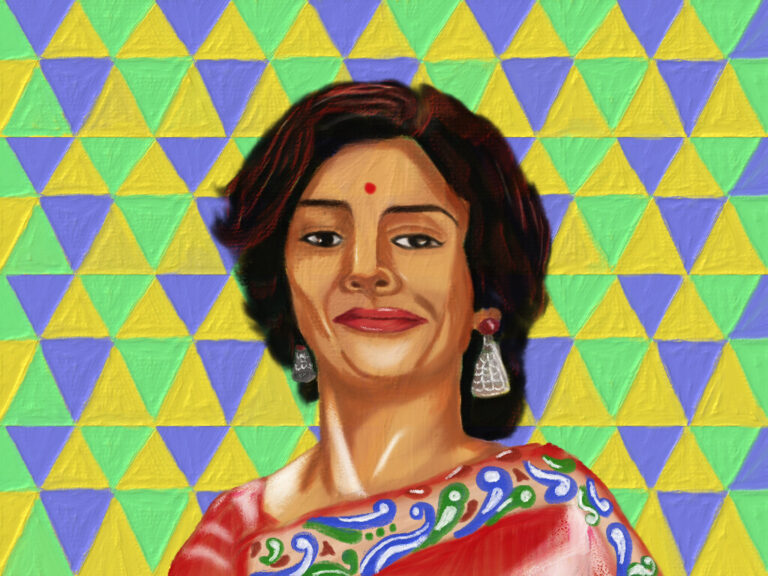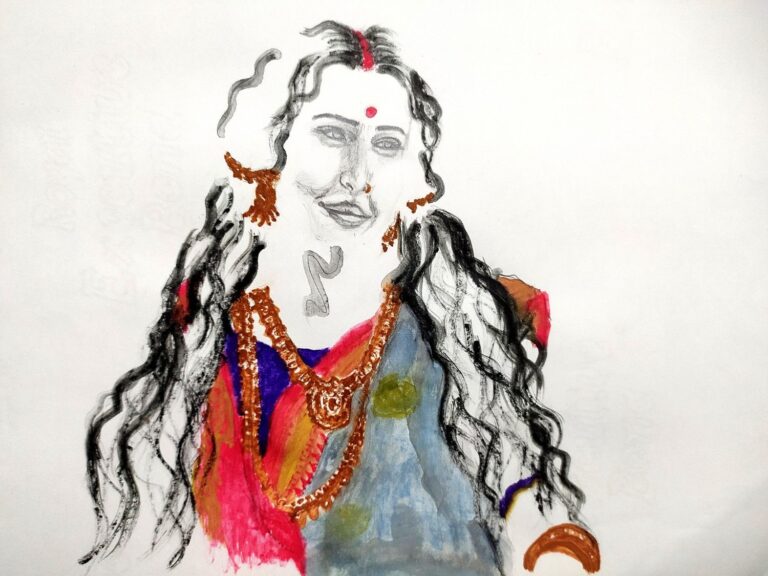‘Karnan’: A Representation of Subaltern Identity
Deivendra Kumar is a Research Scholar at the Department of Communication, University of Hyderabad.
Cinema is considered one of the most influential mediums to communicate with global audiences irrespective of diversities. It is clear that along with being a medium for entertainment, cinema is also a tool to propagate or communicate various elements of the socio, political and cultural realms of Indian society.[1] In this case, Tamil cinema, popularly called Kollywood of India, based out of Chennai plays an important role in reflecting the realities of socio-political and cultural domains of Tamil Nadu. In recent years, a gradual but apparent revamp has been happening in the Tamil film industry, that is showcasing the narratives of the oppressed and subalterns by sidelining the glorified portrayal of dominant-intermediate caste groups in the state. Since the last two decades, arguably from the arrival of director Pa. Ranjith and his progressive-political narratives in a subalternian approach of Ambedkar, Periyar and Phule’s ideologies paved a new wave for Dalit-centric Tamil cinema. Similarly, director Mari Selvaraj came up with a meticulous, and rustic way of approaching subaltern narratives and casteist realities from the Southern belts of Tamil Nadu, especially from the Thoothukudi and Tirunelveli regions. His 2018 film Pariyerum Perumal and his recent movie Karnan (2021) distinctly manifest caste narratives from the landscape of Southern Tamil Nadu.
Karnan is a strong film that showcases the voice of subalterns in the caste-ridden Tamil society. Similar to the director’s well-acclaimed debut film Pariyerum Perumal (2018), this film’s plot also pivoted around Tirunelveli and Thoothukudi regions of Tamil Nadu that witness the most instances of caste violence perpetrated by dominant-intermediate caste groups against oppressed communities.[2] Through various cinematic elements, the film Karnan tries to manifest the anthropological representation of a Dalit community called Pallars better called as Devendrakula Vellalars populated in the said region.
Counter representation to ‘South’ genre
In most of the Tamil films based on the southern regions of Tamil Nadu, particularly Madurai and Tirunelveli, the region act as a landscape to the narrative of dominant-intermediate caste groups, particularly the martial heroism of the Thevar caste.[1] Similar to the much celebrated Madurai genre films, Dalit-centric films too documents their caste identity, festivities, icons, symbols, clan histories, martial pre-eminence as well as other socio-political and cultural elements. In the Madurai centric films, the intermediate caste groups are shown as hegemonic, lordly, generous, fearless, gore, assertive, and violent whereas the oppressed castes are always sidelined and portrayed as submissive.[3] However, Karnan tries to represent the untold stories of the oppressed caste groups and the vile sides of casteism that prevails in the region.
The revamp of Tamil films from the last two decades, resulted in this portrayal of groups once shown to be submissive as assertive- as ones who question inequality and discuss the need for an egalitarian ideology.
‘Karnan’: An untold story of Pallars community
The film plot pivots around a village named Podiyankulam in Chidambaranar district of Tamil Nadu [today’s Thoothukudi (Tuticorin) district]. The name of the village shares a direct resemblance to the Kodiyankulam village in Tuticorin district in south Tamil Nadu where a police riot happened on August 31, 1995. This incident is considered one of the worst police rampages that was carried out as a form of enacting police violence to ‘discipline’ Dalits. This riot is an undeniable episode of police atrocity against Dalits which ravaged their moral as well as their material life.
In Kodiyankulam village, a major population of Pallar caste resided, and were economically sound compared to Thevars or Maravars (an intermediate caste) caste groups in the surrounding villages. The village enjoyed financial flow from their family members who worked in Dubai, Kuwait and the United States.[2] The villagers of Kodiyankulam were affluent because at least one person from each family is employed in Dubai and other Gulf countries, and they had become well educated and secured government jobs becoming IAS officers, doctors, engineers, and lawyers, etc.[4] Thus the Pallars become the most developed among the other castes in the village. The progress in their education and financial stability disturbed the Thevars, provoked them to unleash several raging violent episodes against the Pallars in Kodiyankulam.
‘Karnan’: A plightful episode of Kodiyankulam Police Riot
The episode of the Kodiyankulam riot occurred on August 31, 1995, where the police force ambushed the village in the presence of a district collector and police sub-inspector and destroyed their households.[2] The police struck the village by claiming a door-to-door search for weapons citing that a group of Pallars including their local leaders assembled a few days back in the village to decide the defensive action in the possible attacks of Thevars in the future. As an assertion of their power, the police broke doors and went on a rampage in the name of searching for weapons.[4] On the contrary, it is also argued that the main motive of the police raid was to arrest Dalits who are charged allegedly in the murder of three Thevars in a nearby village.[2]
According to the Frontline reportage (dated December 11, 1999) of the event “The purpose of a four-hour long police operation was to destroy the economic base of the village”. The police damaged household appliances like TVs, fans, tape recorders, sewing machines.[2] Further, the police contaminated sources of drinking water by pouring diesel, kerosene and insecticides, mixed pesticides in food grains and broke all kitchen utensils. They even stole money and ornaments kept in the houses and made damages of around three crores through the raid.
This police riot in Kodiyankulam reveals the casteist character of the law and order machinery of the state. The police broke the portrait of Ambedkar in almost all the houses in the village, explicitly showing their casteist rage.[4] The purposeful destruction of the economic base of Dalits reveals the resentment the Thevars held against the well-established Pallars in Kodiyankulam. This riot is loosely documented in the film, through portrayal of vehement police violence in Podiyankulam village in the presence of district collector, a police inspector and around 600 police personnel.
Resistance as Retaliation
Though the film showcases various acts of suppression, oppression, humiliation and hegemonic activities unleashed by the dominant, intermediate caste that reside in fictional Melur, a village close to Podiyankulam, unlike other Dalit-centric films, Karnan portrays the counter-hegemonic actions of Pallars in Podiyankulam in retaliation of Dalits against caste Hindus. This is in contrast to the director’s debut film Pariyerum Perumal (2018), where the hero is shown as a single man who fights against humiliation, discrimination and oppression of dominant-hegemonic groups, while seeking space for education and being very particular in avoiding confrontation. Whereas in Karnan, the protagonist is shown as assertive, ready to fight back the dominance and hegemony imposed over his community. Thus, Karnan registers the history of collective subaltern resistance against the police rampage into the Podiyankulam village.
Caste elements and Symbolism in Karnan
In Karnan, similar to the director’s debut film Pariyerum Perumal, the young filmmaker Mariselvaraj has used an ample number of symbolisms to provide authenticity to the plot as well and represent the cultural elements associated with the Pallars community in southern districts of Tamil Nadu such as their festivities, commemoration etc.
The filmmaker is very peculiar in symbolizing caste icons, leaders associated with the respective caste groups. At the beginning of the film, in the song ‘Kanda Vara sollunga’ a statue of a kingly figurine mounted on a horse, with two of its legs hooving up in the air, wielding a sword in hand is shown with a backdrop of full moon night. This shot resembles the historic icon Veeran Sundaralingam (who served as a general of the Poligar Veerapandiya Kattabomman), Pallar community leader (Devendrakula Vellalars) who was born on the day of Chitra Pournami (a full moon day in the month of April) in 1770. Likewise, a headless portrait of a man in a military outfit is drawn in the village wall, to which Grandfather Yeman’s head is drawn at a later point to commemorate him. The portrait shares a close resemblance with anti-caste martyr Immanuel Sekaran, considered as a dedicated leader and caste icon among the Pallars.
In many instances, to represent the caste more subtly in this film, the filmmaker has used certain elements like the rearing of black porks by Grandfather Yeman which represents the pigs breeding practice (culture) among the people of the Pallar community in Tamil Nadu. Likewise the usage of film posters pasted on the wall of Melur bus stop also holds great significance. Though the posters are made visible to represent the period in which the story takes place, it can also be interpreted that the film posters of Seevalaperi Pandi (1994), a film showcasing the caste pride of dominant, intermediate caste groups in Tamil Nadu and of Bharathi Kannamma (1997), a film about the impossible love between an intermediate caste woman and a lower caste man under the implication of cross-caste marriage, subtly represents the discussion of caste groups like Thevars and Pallars in the film narrative. Likewise, the posters and images of actor Prasanth in walls, lamp posts, Almirah, and in T-shirts shown in the film shows the hero worship, fandoms and caste among Pallars or Devendrakula Vellalars. As Prashanth belongs to this particular community, he is considered as a film icon and a notable public figure of the Pallar community. [6]
Additionally, when the protagonist Karnan mounts on an elephant and enters his village after slaughtering the ceremonial fish, the Nadaswaram music of the song ‘‘Poradada oru vaalendhada’ (Herald a sword and fight) from the movie Alai Osai (1985) is played in the background. This song is considered as the anthem of Devendrakula Vellalars who plays this song during marriage and other ceremonies even today.[7] Further, the usage of the sword wielded by the protagonist in the event of the fish slaughtering ceremony can be seen as an assertion of Pallars as a counter to the celebration of Aruvals (sickles) or machete among the intermediate caste groups as represented in the ‘Madurai genre films’.
Recapitulating the analysis, the film manifested the anthropological realities of Pallars and their socio, political, and cultural realms. Furthermore, the film is assertive and poses a counter to the ‘Madurai genre films’ that repeatedly showcases intermediate castes as hegemonic, by representing the subaltern identity of Pallars. Karnan showcased the realities of the caste spectrum between the caste Hindus and Dalits, and their long-lasting caste oppression and violence. Further, the movie also reflects collective anti-caste resistance to seek space for education, liberty and equality in an uncivil-casteist society.
References
- Damodaran, K., & Gorringe, H. (2017). Madurai Formula Films: Caste Pride and Politics in Tamil Cinema. South Asia Multidisciplinary Academic Journal, 1–30. https://doi.org/10.4000/samaj.4359
- Devakumar, J. (2006). Caste Clashes and Dalits Rights Violations in Tamil Nadu. Indian History Congress, 67, 606–623. Retrieved from https://www.jstor.org/stable/44147981
- Kumar A, D. (2020, August 12). Pariyerum Perumal: A film that manifested the casteist reality of South Tamil Nadu. Retrieved July 06, 2021, from, https://www.academia.edu/45095411/Pariyerum_Perumal_A_film_that_manifested_the_casteist_reality_of_South_Tamil_Nadu
- Kannan, T. (2000). Caste Violence and Dalit Consciousness: A Critical Interpretation of Dominance. Institute for Social and Economic Change, 7–12. Retrieved from http://www.isec.ac.in/Caste_violence_and_dalit_consciousnes.pdf
- Damodaran, K. (2018a). Pariyerum Perumal: A Film That Talks Civility in an Uncivil, Casteist Society. Retrieved July 06, 2021, from https://thewire.in/film/a-film-that-talks-civility-in-an-uncivil-casteist-society
- Suresh, M. (2019). Representation of Caste in Digital Banners: A study on Socio-Cultural Dimensions in Tamil Nadu. Mizoram University, 119–193. Retrieved from http://mzuir.inflibnet.ac.in:8080/jspui/bitstream/123456789/831/1/M.SURESH%2C%20Mass%20Com.pdf
- Damodaran, K. (2018b). Contentious spaces: caste, commemorations and production of political community in South India. Social Anthropology and Thesis Collection, University of Edinburgh, 29–331. Retrieved from http://hdl.handle.net/1842/29633
IMAGE SOURCE: The News Minute








